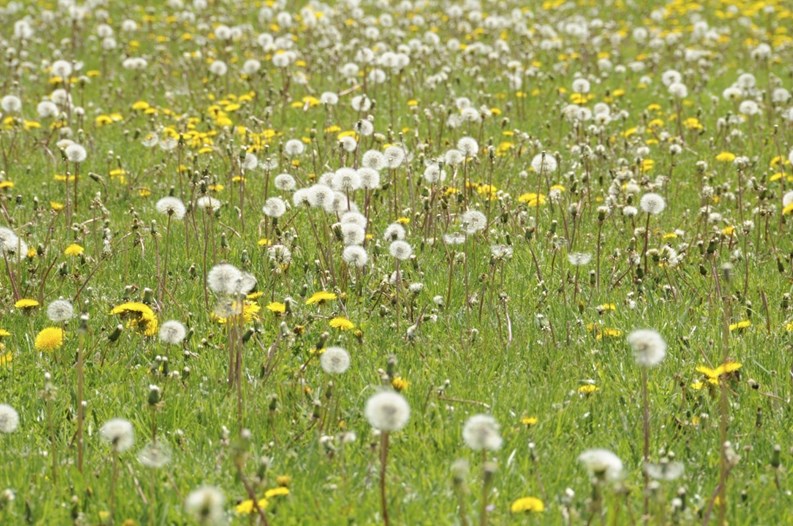While it was a trying winter with more snow and ice than usual, there is always the promise of springtime and all it entails—blossoming trees, the return of singing birds and green grass. But just like the maintenance and care necessary to keep the grounds clean and safe in winter, landscaping becomes a critical challenge during spring, summer and fall.
“There are many factors that come into play when it comes to maintaining a great lawn,” says Jason Cina, operations manager for the Waldwick-based Chris James Landscaping. “I would say the four most important are mowing practices, irrigation, fertilization and weed control.”
Start Sooner
In order to be prepared for mowing, irrigation, fertilization and weed control, it is recommended to take proactive steps after Thanksgiving. “Finish removing leaves from lawn areas. If possible, shred the leaves with the lawn mower and add to perennial or annual beds as mulch,” advises the New Jersey Landscape Contractors Association (NJLCA). “Finish cutting back those perennials, which have little winter interest, or that can potentially spread seed throughout the garden and become a weed nuisance during next summer.”
With winter preparation in place, Cina says that in New Jersey, the frost-free date is May 15, which is when summer flowers should be planted. However, associations, he adds, should revisit landscaping needs in March or April, depending on the weather. If weed suppression in the gardens is on the agenda, for example, he explains it’s a good idea to mulch early.
“The timing of the first fertilizer and crabgrass pre-emergence application is very important. It needs to be made before the crabgrass seeds start to germinate,” says Cina. “This could be any time between early and mid-April depending on how quickly the temperatures warm up in the spring.”
In order to effectively prevent any future crabgrass growth in the season, a second fertilizer and crabgrass pre-emergence application is advisable six to eight weeks after the first application. From that point forward, it is recommended to fertilize every six to eight weeks until the growing season ends, explains Cina.
But who should an association turn to perform this work? Should it remain in-house with management or do most associations have it as part of its respective budget and look to outside contractors?
“In most situations an outside contractor is hired and works within the budgeted/dispersed fees that are controlled by the residence association,” according to Jason Crean, the lawn maintenance division manager of the Allendale-based Borst Landscape & Design. “In general, the association usually hires an outside contractor to maintain the grounds of the development.”
There is good reason why professionals are suggested for all landscaping applications, Cina says. If grub damage is a turf concern, preventative measures must be made when grubs are just beginning to feed, but before irreparable root damage is done, which usually occurs in June.
Chemical Balance
When combating unwanted growth such as weeds, crabgrass or nuisance plants, professionals look to leading market products. Historically, chemicals were used to combat unwanted growth, but many of these were deemed unsafe and legislation outlawed their usage. In recent years, there has been a movement toward organic remedies although certain approved chemicals are still administered.
“The best way to combat weeds and nuisance plants is to not let them get a hold in the first place. By encouraging a healthy lawn and landscape through the use of organic fertilization, the healthy plants do not leave room for nuisance plants to get started,” says Crean.“Unfortunately, to kill off plants that are detrimental you still have to use a chemical, but the goal is to use as little of these products as possible. Crabgrass and sedge are among the toughest and most common weeds along with clover, nutsedge and chickweed.”
Among other unwanted plants and weeds are dandelions, oxalis, ground ivy, black medic, wild violet, purslane, broadleaf plantain, nutsedge, thistle, foxtail, Virginia creeper, poison ivy, wild grape and morning glory. “In my experience, clover, oxalis and wild violet have been the most difficult weeds to eradicate out of the handful of weeds on this short list,” says Cina, who notes that his company is licensed for pesticide applications as well as for irrigation installation and repair.
If the weeds are minimal in growth, moderate use of chemical control by a licensed pesticide applicator is the most effective way to combat unwanted weeds. Cina explains that there are non-chemical herbicides such as corn gluten meal and citric acid-based products that have been proven to be “somewhat” effective. However, he adds that these products are likely more expensive.
While early due diligence can be effective in thwarting unwanted growth such as crabgrass, there are problem areas such as edges where a lawn meets paved surfaces. In these cases, this compacted portion of turf and crabgrass can, and will, persist even if pre-emergence applications are made.
“If that is the case, a spot application with a selective herbicide that is labeled for use on crabgrass is the best approach toward eradication,” says Cina. “I would also recommend making an application of a garden pre-emergence in all gardens in the spring. This will keep many of the weed seeds that are in the soil from germinating.”
In specific trouble areas, spot applications of a non-selective herbicide is an acceptable practice, but associations must hire seasoned professionals, who know not to accidentally allow any over-spraying to come in contact with the desirable plants in the garden. “Spraying weed killer on a windy day is not recommended,” says Cina.
Landscape Investments
With the changeable climate we have in the Northeast, only certain types of lawn turf are best used in the Garden State. Bradley Park, a laboratory researcher at Rutgers University’s Department of Plant Biology and Pathology, believes only the heartiest most durable grasses should be used for New Jersey lawns. “Cool-season turf grasses are the most predominant in New Jersey,” he says. “These include Kentucky bluegrass, perennial ryegrass, tall fescue, and fine fescues. Some lawn and ground locations consist of zoysiagrass, a warm-season turf grass.”
The amount of money an association invests in keeping a respective property healthy and aesthetically pleasing depends on a numerous factors. These include the size of the property, as well as the types of trees, plants, shrubs, flowers and bushes that populate the property. As a result, investment amounts will vary.
According to the Environmental Protection Agency (EPA), the average 1-acre lawn costs approximately $700 and requires 40 hours of labor each year to maintain. However, this metric is more so a guide for pricing, explains Crean.
“All work performed costs are based on a formula using the square footage of the lawn area of the complex. Therefore all costs are individual for each location,” says Crean. “All the costs and labor requirements are based once again on the size of the location and the unique requirements that each site has.”
Cina finds the EPA purported average “askew.” He says that the aforementioned figure might equate to the material cost for the products required to make all the necessary fertilizer and pesticide applications over the course of the season. “The level of service will dictate the ultimate cost. All sites are different,” says Cina. “Some may have more lawn than others; some may have more garden areas to maintain than others; and some may have more roads that need to be plowed than others.”
To provide greater context, Cina offered these examples. A 27-acre association in New Jersey, for example, pays close to $200,000 per year for landscape maintenance and snow removal combined in the same contract. This service agreement is common.
“An average high-end, single family, residential property on a one-quarter acre lot can easily cost upwards of $4,000 per year for landscape maintenance alone,” says Cina, “especially after you take into consideration spring and fall clean ups, mulching, weekly mowing, fertilization, and a little seasonal color and pruning.”
Landscaping Practices
Whether an association hires an outside contractor or allows the management company to handle landscaping duties, there are industry protocols underscoring best practices.
Most landscape contractors subscribe to or have professional accreditation from landscaping organizations such as the New Jersey Landscape Contractors Association, the American Society of Landscape Architects and the Professional Landcare Network (PLANET). The NJLC, for one, also holds an annual trade show and conference, which is now marking its 37th year. And don’t forget that dozens of landscape contractors will be among the 250 exhibitors at the New Jersey Cooperator’s Condo, HOA & Co-op Expo, which will take place Wednesday, May 7, 2014, at the Meadowlands Expo Center in Secaucus. Hours are from 10 a.m. to 4:30 p.m.
When asked about new industry trends, experts cite environmentally-safe green products and organic-based lawn care products as the new wave.
“Organics gives nutrients to the soil to make it healthy and become a desirable place for the grass to grow. Healthy soil means less pesticides and more beneficial insects,” Crean says.
And if an association opts to handle landscape operations in-house, Cina has some advice: don’t designate landscaping responsibilities to a maintenance employee who is a jack of all trades, but a master of none.
“Most often, an outside contractor is hired to handle the landscape maintenance in a condo, or co-op setting; although, there are many that do handle it in house, “he continues. “The only drawback with doing it in house is that the workers are not usually horticulture experts. They are maintenance workers that are assigned maintenance tasks on all levels. So, they may be mowing grass one day and fixing potholes, or changing light bulbs, the next.”
W.B. King is a freelance writer and a frequent contributor to The New Jersey Cooperator.







Leave a Comment